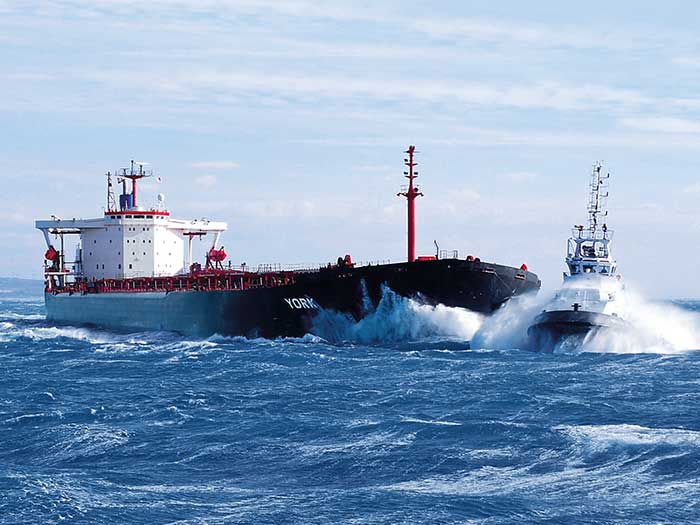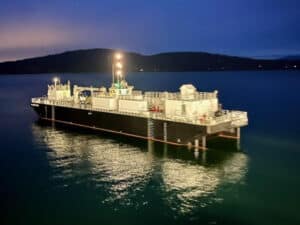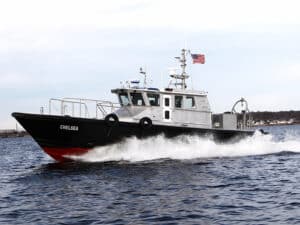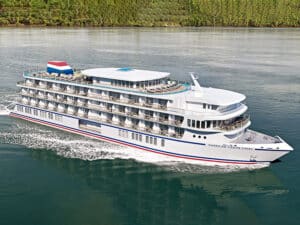
Voith to unveil new system for remote control of tugboats
Written by Nick Blenkey
FernSAMS has been developed to enhance safety and efficiency of tugboat interactions with large ships.FernSAMS has been developed to enhance safety and efficiency of tugboat interactions with large ships.
Voith will showcase a new system for remotely controlling tugboats in a live streamed simulation at Germany’s upcoming 12th National Maritime Conference, being held virtually May 10-11.
Called FernSAMS, the technology has been developed to remotely control tugs during mooring and casting-off maneuvers with large ships.
The technology is the product of a collaborative project funded by the German Federal Ministry for Economic Affairs and Energy (BMWi) with the aim of making tugboat operations safer.
Led by Voith, the project involves a consortium of industry and technology experts: the Hamburg University of Technology, the Fraunhofer Center for Maritime Logistics and Services, the Federal Office for Hydraulic Engineering, winch and crane manufacturer MacGregor, the Marine Training Center (MTC) Hamburg and communication specialists from MediaMobil.
“Standardized, automated tugboat assistance will significantly reduce costs for shipping companies and port operators and increase the speed of individual ship maneuvers,” says Dr. Dirk Jürgens, Vice President Research and Development at Voith Turbo Marine and Project Manager for FernSAMS, noting that, in the global shipping environment, every minute spared represents a considerable cost reduction.
In addition, with a remotely operated tug fleet, it is possible to reduce construction and operating costs. Because most of the boats will be operated by an intelligent remote control, they do not need crew facilities. noise insulation, and even the bridge, could also be eliminated. This reduces the weight of the vessels, making them even more maneuverable and reducing energy consumption.
NEW OPTIONS
Voith says that the concept also opens up new options for the design of the remote-controlled vessels; for example, there is no longer a need to make provision for a deck house to accommodate towing gear.
The second objective of FernSAMS is to substantially improve crew safety.
Until now, tow lines have been handed over manually, requiring the tug operating at the front of the ship to navigate directly in front of the bow of the moving freighter. Harbor pilots on the bridge of the vessels, which are often well in excess of 300 meters long and 45 meters wide, coordinate these maneuvers with the tugboat captains.
During this process, the tow lines are subjected to immense forces, which can reach more than 100 metric tons during dynamic maneuvers. In remotely-controlled tugs using the FernSAMS key technology, all critical maneuvers and operations can be controlled from a safe distance. This minimizes the risk of accidents for personnel.
COMPLETE AUTONOMY NOT THE AIM
FernSAMS is not aimed at achieving a completely autonomous operation.
“The basic principle is to replace one or several tugs in a team with unmanned vessels. The remote control is done on board one of the boats involved,” says Jürgens. To function properly in real time, this requires a fast and reliable data connection between all players, even when there is the huge mass of a ship interposed between the tug and its remote operator.
“The 5G mobile communications standard is a potential transmission solution,” says Jürgens. “Satellite communication is also a likely option to serve as a safety backup.”
As well as leading the project, Voith is also contributing its extensive expertise in maritime propulsion systems, such as the Voith Schneider Propeller (VSP) and Voith water tractors.
- Why FernSAMS? It’s a German acronym for “Ferngesteuerte Schlepper bei An- und Ablegemanövern großer Schiffe” referring to “remote-controlled tugs used during mooring and casting-off maneuvers of large ships.”




